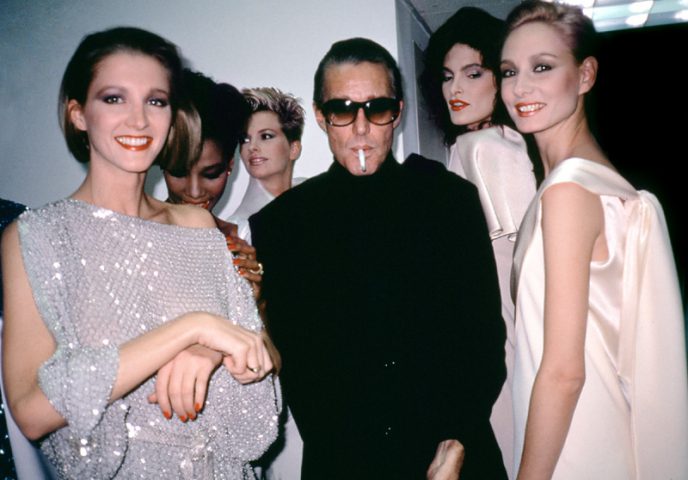Midway through the new documentary “Ultrasuede: In Search of Halston,” fashion designer Ralph Rucci remarks that Halston—the Iowa-born milliner-turned-stylist of 1970s New York—was an undisputed genius with fabric. Cut exclusively on the bias, his diaphanous designs enveloped socialites and starlets, Hollywood royalty and nightcrawlers at Studio 54. He once cut a gown out of a single piece of fabric, right off the bolt, demonstrating his impeccable eye for drape and texture. Halston’s wearable, minimalist clothes exemplified the slinky, sexy mores of 1970s American culture.
“Ultrasuede” reveals the story behind his famous halter dresses and sheaths worn by Liza Minnelli, Elizabeth Taylor, Bianca Jagger and Lauren Hutton, as well as his longtime models Pat Cleveland and Anjelica Huston. Vogue editor-at-large Andre Leon Talley, New York Times fashion editor Cathy Horyn, Diane von Furstenberg and dozens of others describe his influence in American fashion and brand licensing long after his death from AIDS-related lung cancer in 1990. The story of Halston’s early life and influences—such as what inspired Jacqueline Kennedy’s famous pillbox hat, which Halston designed for the 1961 inaugural—is left vague.
A self-described 70s addict, director/writer/producer Whitney Sudler-Smith takes the audience along on his journey of discovery (in a de rigueur Trans Am, of course), a technique that painfully reveals a lack of research. He appears in nearly every frame, chatting with the fashion editors and designers, which inadvertently gives “Ultrasuede” the look of a film-school thesis.
And there are missed opportunities for real discovery—Sudler-Smith uncovers a long-hidden archive of Halston scrapbooks, sketches and garments incongruously kept in boxes at a tiny Bible college in Tennessee, but exits the premises after rifling through a few clippings. Even an interview with Borghese CEO Georgette Mosbacher, keeper of the archive, reveals nothing of the collection’s contents or value. A visit to New York’s fashion week in search of Halston’s influence also leads nowhere.
So much of New York’s cultural influence in the 1970s originated with gay artists, whether the medium was disco, visual art or fashion, and Halston, presumably, was a part of that meme. “Ultrasuede” sails over the any investigation into the role Halston’s sexuality played in his creativity and social circle, another strange oversight in a documentary that seems averse to too much depth.
“Ultrasuede: In Search of Halston” opens January 20 in New York City at the IFC Center, 323 Sixth Avenue at West 3rd Street (ifccenter.com).


What Do You Think?